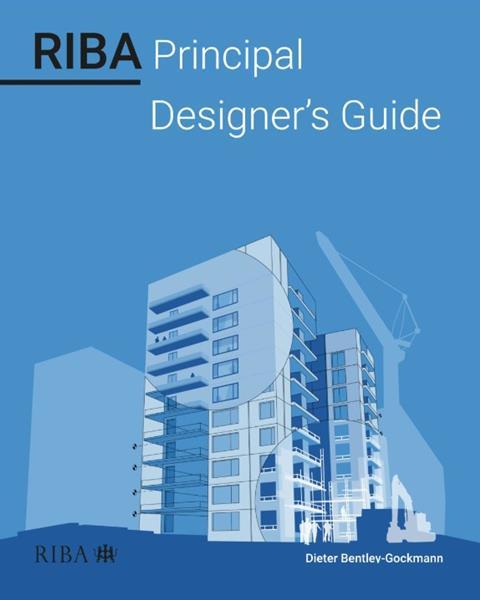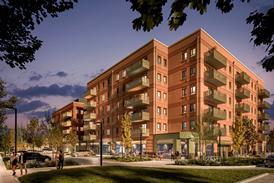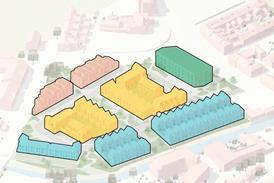Sarah Susman welcomes the arrival of a new guide to the post-Grenfell regulatory environment

Seven years after the Grenfell Tower fire, we are still reading periodic news articles concerning its after effects: to people, communities, buildings and legislation. Extraordinarily, or perhaps not in our current national condition, it has taken this length of time to draw up and enact the Building Safety Act 2022 (BSA), to legislate to ensure that the construction industry designs, specifies and builds safe buildings for people to live and work in.
All of which could and should have taken place under existing legislation. How it came to be that the UK had to legislate to build, manage and maintain our buildings to ensure occupants’ safety will be another chapter in this sorry saga. The Building etc. (Amendment) (England) Regulations 2023, which were implemented under the BSA, exclusively apply to England. Meanwhile, Northern Ireland, Scotland, and Wales either have their own regulations in place or are in the process of developing them.
The RIBA is the first organisation to produce a comprehensive Principal Designer guide for the construction industry, incorporating the roles of the Principal Designer Building Regulations (PD BR) and the Principal Designer Construction Design and Management Regulations (PD CDM), including the enhanced PD BR role for higher risk buildings (HRB). Naturally, this guide is presented from the perspective of the architect but applies equally to any other lead designer.
It has been a long process that can be attributed to the protracted release of government supporting legislation and guidance. This guide takes us through the legal framework of the two roles, the intricacies of the appointments, the statutory duties and the required competencies. Since the guide covers both roles, relevant sections feature an identifier for the applicable regulation (CDM, BR or HRB).
Dieter Bentley-Gockmann, a chartered architect, also holds a master’s degree in construction law and arbitration. He authored the RIBA’s Health and Safety Guide, the companion guide to this one. Its recent second edition now includes comprehensive coverage of the BSA. He has done a sterling piece of work to bring together in a single place these two roles of Principal Designer.
The RIBA and Dieter have taken their cue from the legislation that the PDs will be an active designer (organisation or individual) within the design team. Given the requirements set out to plan, manage and monitor design work, as well as to possess appropriate skills, knowledge, and experience (and behaviours under the BSA), it is regarded most effective for the lead designer to undertake this role.
This is an excellent book
After clarifying the roles and their rationale, the legislative background is described putting these roles into context. A suitably dry section clarifying the legal liabilities and professional indemnity issues is included, acknowledging how new the regulations are and the lack of significant case law to date.
Regarding the principal designer, it makes clear that it is the client’s legal responsibility to appoint both a PD CDM and PD BR who will have control over the design of the project. This appointment should typically occur as early as possible in accordance with the specific regulation. For details of the client role under both regulations, the guide directs you to the RIBA’s Health and Safety Guide (2nd edition). However, the principal designers have a duty to advise the client about their role under both regulations and helpfully the guide includes sample client care letter templates for both domestic and commercial projects.
The common misconceptions regarding the pre-construction phase under the CDM Regulations have been clarified in the new regulations as the design phase, and it is made clear that this will usually have some concurrence with the construction phase. The guide goes on to clearly outline the situation on novation to a design and build contractor (now our most common form of construction contract), a topic of discussion since the CDM Regulations 2015 were introduced: the principal designer role cannot be novated.
The client must appoint another principal designer, which would have to be the contractor, as they are responsible for completing the design work. However the contractor, like any other designer, may appointment another organisation with the relevant capability as their sub-consultant to help them carry out the role.
>> Also read: A Principal Designer and Contractor become a legal requirement from October, but are architects and clients ready?
The responsibilities of the two principal designers are theoretically comparable, with the CDM Regulations prioritising the health and safety of individuals impacted by the project and the Building Regulations focusing on adherence to the applicable building standards to ensure the safety of the building structure.
Helpfully, the duties of both principal designers are presented side by side, emphasising their similarities and illustrating how the new regulations are built on the principles of the CDM regulations. Given the industry’s familiarity with the CDM regulations, this comparison should aid the understanding of the new regulations’ underlying principles. The duties conclude by detailing the additional requirements for Mandatory Occurrence Reporting (MOR) for higher-risk buildings, examining the underlying principles of MOR and providing a clear process to follow, detailed explanations and useful examples.
There is understandable nervousness in the whole industry about required competence – what it is, who has it and how it can be demonstrated.Two chapters address these issues – one on competence to fulfil principal designer duties and another on the principal designer core competence criteria.
A current discussion point is the ability of the PD BR to be competent in all the design disciplines involved in a project. Here it is clarified that design responsibilities remain with each designer, with the PD BR having sufficient expertise in design concepts, processes and requirements to ensure each designer is fulfilling their duties.
This is an excellent book. There is much to learn from it and I was glad of the graphic identifications of CDM, BR and HRB adjacent to the relevant text. Bentley-Gockmann has an approachable and unshowy style which he has used to provide much needed clear guidance on the various regulations that apply to these two roles.
The book is clearer and more concise in its early stages, becoming more verbose in the final couple of chapters, but this should not detract from what is an important, insightful and well-written guide, much needed by the construction industry in these culture-changing times.
>> Also read: We urgently need Principal Designers. Are architects ready to step up?
Postscript
The RIBA Principal Designer’s Guide by Dieter Bentley-Gockmann is published by RIBA Publishing.
Sarah Susman is a associate director for CDM and building safety at PRP.
















No comments yet